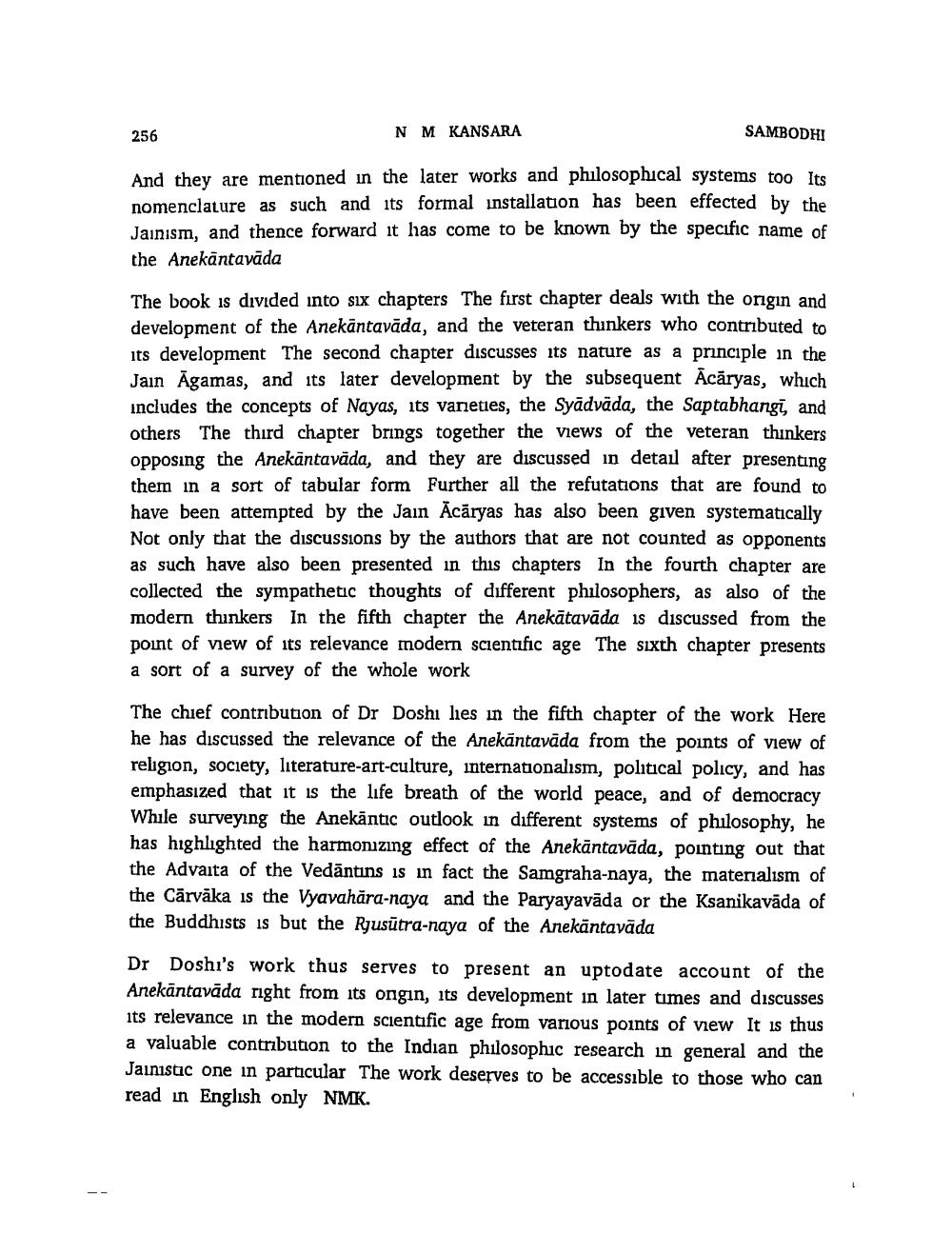________________
256
NM KANSARA
SAMBODHI
And they are mentioned in the later works and philosophical systems too Its nomenclature as such and its formal installation has been effected by the Jainism, and thence forward it has come to be known by the specific name of the Anekantavāda
The book is divided into six chapters The first chapter deals with the origin and development of the Anekāntavāda, and the veteran thinkers who contributed to its development The second chapter discusses its nature as a principle in the Jain Āgamas, and its later development by the subsequent Ācāryas, which includes the concepts of Nayas, its vaneties, the Syādväda, the Saptabhangi, and others The third chapter brings together the views of the veteran thinkers opposing the Anekāntaväda, and they are discussed in detail after presenting them in a sort of tabular form Further all the refutations that are found to have been attempted by the Jain Ācāryas has also been given systematically Not only that the discussions by the authors that are not counted as opponents as such have also been presented in this chapters in the fourth chapter are collected the sympathetic thoughts of different philosophers, as also of the modern thinkers In the fifth chapter the Anekātavāda is discussed from the point of view of its relevance modern scientific age The sixth chapter presents a sort of a survey of the whole work
The chief contribution of Dr Doshi lies in the fifth chapter of the work Here he has discussed the relevance of the Anekāntavāda from the points of view of religion, society, literature-art-culture, internationalism, political policy, and has emphasized that it is the life breath of the world peace, and of democracy While surveying the Anekāntic outlook in different systems of philosophy, he has highlighted the harmonizing effect of the Anekāntavāda, pointing out that the Advaita of the Vedāntins is in fact the Samgraha-naya, the materialism of the Cārvāka is the Vyavahāra-naya and the Paryayavāda or the Ksanikavāda of the Buddhists is but the Rjusūtra-naya of the Anekantavāda
Dr Doshi's work thus serves to present an uptodate account of the Anekantavāda right from its ongin, its development in later times and discusses its relevance in the modern scientific age from various points of view It is thus a valuable contribution to the Indian philosophic research in general and the Jainistic one in particular The work deserves to be accessible to those who can read in English only NMK.




